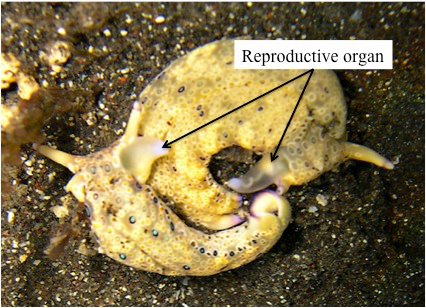Reproduction Behaviour
Opisthobranchs are generally hermaphrodites, where they switch between genders simultaneously. The hermaphrodite gonad, an ovotestis can produce both male and female gonads either simultaneously or together. Despite having very complicated and highly variable reproductive systems, opisthobranchs generally copulate to exchange/transfer male gonads, producing a veliger larvae (Ruppert, 2004).

|
 |
| Figure 1 and 2. Pictures adapted from Rudman (2011) and Pittman and Fiene (2011) respectively. |
The reproduction behaviour of P. ocellatus are not well studied, but individuals have been observed to wrap around each other, forming a knot. Individuals are then observed to attach reproductive organ to a section location on the side of the partner’s head for copulation (Rudman, 2011). The egg masses of P. ocellatus are observed to be a cream coloured spiral shape mass laid on algae (Kay, 1979).
 
|